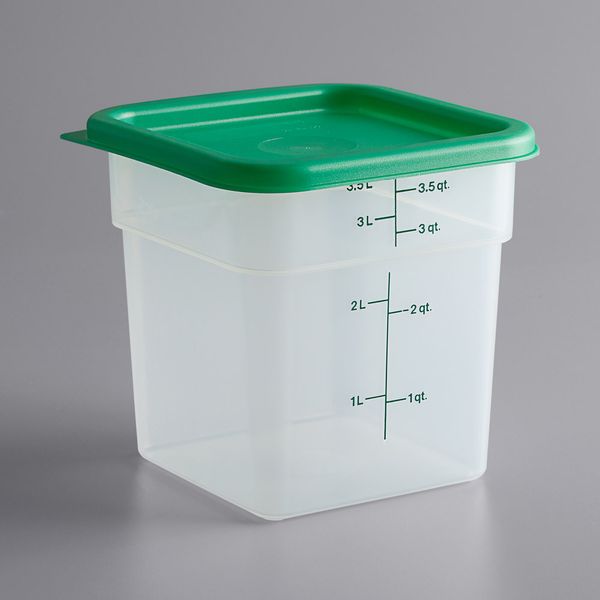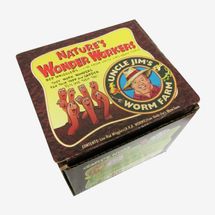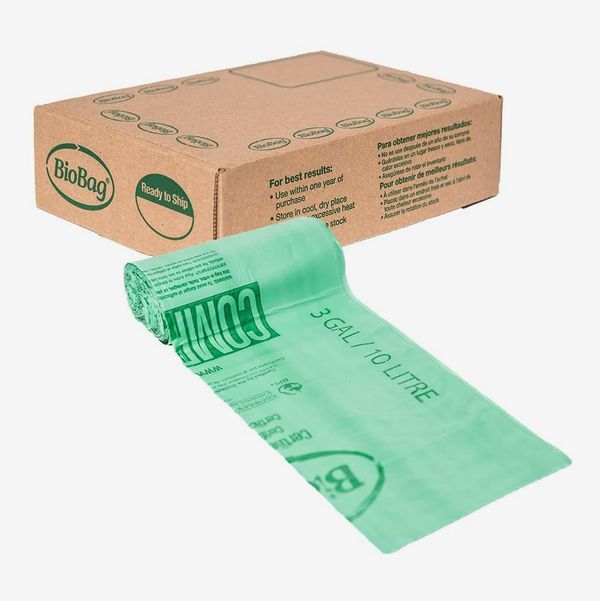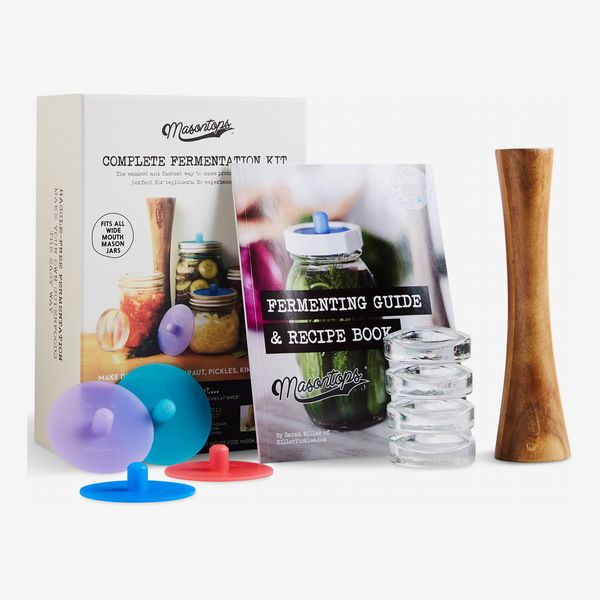
In this article
“Composting is the human version of re-creating what Mother Nature does out in the wild”: mixing together organic materials to facilitate healthy decomposition, says Rebecca Louie, founder of the Compostess website and author of Compost City. Those materials are a combination of carbon-based “browns” (cardboard, paper, sawdust, dried leaves, et cetera), nitrogen-rich “greens” (food scraps like apple cores or banana peels), water, and air. Over time, bacteria break down the scraps to create compost, a soil additive rich in plant nutrients — plus, you end up creating about 50 percent less trash.
I’ve been composting in some form for about ten years in two cities, with scraps going everywhere from an industrial plant to feeding for backyard chickens, so I can attest that the easiest approach is to figure out where and how you’ll be composting and work back from there. You might be able to use a smaller countertop bin if your municipality has curbside composting; if you’ll need to travel to a drop-off site, a higher-capacity container in the freezer buys you time between trips.
What you can compost varies by site as well. In New York City, for example, compost is in a chaotic moment: The Department of Sanitation runs a curbside composting program in Queens and Brooklyn, slated to expand to all boroughs this month, and maintains a couple hundred app-operated “smart composting bins” elsewhere in the city. There’s also a network of independent neighborhood drop-off sites, but many have closed due to the Adams administration cutting the budget for community compost from about $3 million to zero. (Funding has been restored in the 2025 budget, but dozens of sites have already closed.) City-run curbside composting is processed at the Newtown Creek facility in Greenpoint and a site in Staten Island, and accepts a wider range of items, like bones, oily food, and BPI-approved compostable plastics. Drop-off compost feeds to a variety of sites (Big Reuse is the main one). Because these sites don’t use industrial machinery to break down compost, they have a narrower list of what they accept but also have a lower carbon footprint.
If you’re in New York, you can follow the curbside rollout (and request a brown bin) on the Department of Sanitation website, or find your closest drop-off spot on this DSNY map or on this spreadsheet. Even if there isn’t a good drop-off option near you, I’ve tested options for creating your own compost, start to finish, indoors.
Update on December 12, 2024: Updated prices and checked stock for all products.
What we’re looking for
Material
Compost bins should be low maintenance, and they don’t need to be made from expensive or specially engineered materials. Still, there are a few principles to follow: It’s useful if your bin is lightweight, durable, easy to thoroughly clean, and doesn’t permanently take on the odors of its contents. Stainless steel and heavy-duty plastic work well — they’re hardy enough to handle getting banged around but lightweight enough to carry a few blocks to a drop-off spot. Avoid materials that seem flimsy or too precious to contain slimy compost or to get a heavier-duty cleaning.
Capacity
“The first thing you should consider before you even look at the aesthetic — which I know is hard — is how much you produce on a given week and how often you’re going to drop it off,” says Anneliese Zausner-Mannes, co-founder of Nurture BK. A standard countertop compost bin can fit around a gallon of scraps, which represents a good balance of capacity and portability. But we’re favoring systems that come in a few sizes, for households that cook often, and also including indoor systems that can process up to five pounds of food a day. Consider how often you’ll want to empty a bin — whether it’s a quick trip to toss your scraps into a backyard compost tumbler or a trek to a drop-off spot — and whether you have space to store scraps in the freezer between trips.
Lid style
If you’re keeping your compost on the countertop, a good lid will make the difference between a low-maintenance system and a hellscape of funky smells and summertime swarms of fruit flies. A compost-bin lid should actually not be airtight — you want scraps to begin decomposing aerobically (with oxygen), not anaerobically, which makes organic matter take longer to break down and releases smelly gasses, like methane. Some countertop bins have holes in the lid to facilitate airflow or carbon filters to reduce odors; at the very least, a bin intended for the countertop should not create an airtight seal. If you freeze your compost, you don’t need to worry about aerobic decomposition — like everything else in your freezer, your scraps will be too cold to rot — but a lid will help prevent veggie-scrap smell from permeating your freezer.
Best compost bin overall
Material: Plastic | Capacity: 0.75 gallons, 1.75 gallons | Lid style: Removable flip-up lid
The OXO compost bin is a great, fits-everyone bin, first recommended to us by Tonne Goodman, sustainability editor at Vogue, who keeps it in her fridge and uses it to tote scraps to New York’s Union Square compost center. It checks all our boxes: It comes in two sizes, the larger of which is high-capacity enough for households that cook often, and it has a non-airtight lid. It’s made of easy-to-clean plastic that can handle a few dings, and it is lightweight enough to carry to a drop-off site.
Before testing the OXO bin, I considered myself a freezer-only composter and expected to use it mostly to collect scraps before transferring them to the freezer, like an XL version of a food-prep garbage bowl. But in a happy coincidence, the bin arrived around the same time that curbside composting resumed in Queens, making it a lot easier to get rid of my compost. The freezer bin became an overflow container while the OXO bin got filled up and emptied into the brown curbside bin about once a week. The OXO container is sturdy, easy to clean, and keeps week-old compost smells contained.
I also love its little quality-of-life details — the hinged lid detaches for easier cleaning, and it opens via a tab on the lip versus a knob on the top, so it’s easy to nudge the bin open and toss a scrap in one-handed. (That doesn’t sound important until you’ve tried to get rid of eggshells with one hand while the other is covered in bread crumbs — it’s very helpful.) The OXO bin is both easy to carry and can live in the freezer; its rectangular shape even means that it won’t waste as much freezer space as a similar-capacity circular bin.
Best stainless-steel compost bin
Material: Stainless steel | Capacity: 1.3 gallons | Lid style: Vented lid with charcoal filter
For something slightly more elegant-looking but still sturdy and functional, I recommend this stainless-steel Epica bin. I used it for about three years, and it performed ably on the countertop through some hot and sticky New York summers. (It’s still in use at my former apartment and looks great.) Its vented lid allows for airflow, and two layers of charcoal filters block compost smells effectively. (If your compost is getting soupy but the bin isn’t full enough to empty yet, another way to remediate smells is to add carbon-rich “browns,” like shredded cardboard or ripped-up brown paper bags, to the bin.) Although the lid could get grimy, it’s easy to remove the charcoal filter and thoroughly clean it out, an essential quality in any compost bin.
Best enamel compost bin
Material: Stainless steel, enamelware coating, plastic insert | Capacity: 1 gallon | Lid style: Pail lid with charcoal filter
Cookbook author Claire Saffitz uses this enamel compost bin at her cabin in upstate New York, where she and her husband “cook constantly.” “I like it because it’s big. We had a different pail that was smaller, and we filled it up so frequently it became annoying,” she says. (They empty the bin every couple days into a compost tumbler outdoors.) She also likes that its white-enamel finish is “clean-looking,” with an easily removable and cleanable plastic insert. And the most important quality for a countertop bin: “We never get smells.”
Best stylish compost bin
Material: Bamboo fiber | Capacity: 1.15 gallons | Lid style: Vented lid with charcoal filter
There are a lot of cute compost bins on the market, and not all of them hold up. Bamboozle is an exception: According to Strategist contributor Ruth Baron, the 1.15-gallon bin is durable, is easy to carry several blocks, all while being a favorite among “hot, environmentally conscious New Yorkers.” She likes that it’s dishwasher-safe and, despite its lightweight bamboo-fiber construction, reports that “she’s sturdier than she looks.”
It also has one of the highest recommendations for a compost bin: top-tier odor blocking. After accidentally leaving a semi-full bin of compost out on her countertop while she was away over the summer, Baron cracked open the bin and smelled “an odor that can be described only as all the reasons people don’t compost.” After replacing the lid, “within seconds, it was as if it had never happened.”
Best freezer compost bin
Material: Polycarbonate plastic | Capacity: 2 gallons | Lid style: Snap-on lid
In the freezer, where vegetable scraps will not be actively decomposing, you don’t need to get complicated: Zausner-Mannes uses brown paper bags and leftover plastic containers, for example. My favorite is an eight-quart Cambro polycarbonate container (also one of our favorite food-storage containers), which sits in the back corner of my freezer and is high-capacity enough that I only need to empty it once every few weeks. It’s sturdy and heavy duty, which licenses me to mash down compost with whatever blunt implement I can find, which was useful for buying a couple of extra days when my compost drop-off site was a 15-minute walk away.
Before buying the Cambro container, I used a one-gallon Leaktite plastic pail— I’ve since repurposed it as a general-use cleaning bucket — which also worked well, but its round shape made less efficient use of limited freezer real estate.
Best modular compost bin
Material: Stainless steel casing, plastic bin | Capacity: 1.1 gallons | Lid style: Soft-seal lid
This Simplehuman compost caddy is compatible with many of the brand’s trash cans (including our best-in-class kitchen trash can). It was recommended by both Taryn Williford, managing editor at Reforge and former lifestyle director at Apartment Therapy, and Strategist senior writer Liza Corsillo. Its integration with her existing trash and recycling system “really soothes both the aesthetic and functional parts of my brain,” Williford says. The caddy can be docked on the side of the bin or rest on your countertop, and the lid has a soft closure that isn’t airtight.
Best worm composter
Material: Plastic | Capacity: Up to five pounds of scraps | Lid style: Stacking plastic trays, plastic lid
If you have more time and space to devote to composting and want to keep the nutrient-rich end product to nourish your plants, Diane Miessler, permaculture designer and author of Grow Your Soil, recommends the Vermihut five-tray bin. “Worm bins require some simple maintenance to keep them thriving and odorless,” Miessler says, but the system scales well to the volume of food scraps you’re processing. You can add or remove trays as necessary, and at its peak, the VermiHut can process up to five pounds of food scraps per day. Plus, she says, the final product — rich compost writhing with red worms — “brings joy to most gardeners.”
The Vermihut bin doesn’t come with worms, which you’ll have to buy separately. Louie and George Pisegna, deputy director and chief of horticulture at the New York Horticultural Society, recommend stocking up on red wigglers, which you can buy from her preferred supplier, Uncle Jim’s Worm Farm. Pisegna suggests ordering them online — one thing to note is that most retailers won’t ship during very cold parts of the year to avoid freezing the worms.
Best Bokashi composter
Material: Plastic | Capacity: 5 gallons | Lid style: Tight-sealing lid
Unlike other methods, Bokashi composting works in the absence of oxygen by mixing microorganism-saturated oat bran with food scraps and storing the blend in an airtight container. This specific bin and bran kit comes recommended by both Marisa DeDominicis, co-founder and executive director of Earth Matter NY, and Pisegna. One advantage of Bokashi, Louie says, is that you can add “the crazy Frankenstein stuff in the back of your fridge — like condiments or oily things — that wouldn’t go in a normal compost system.” The fermented materials are then buried in your garden to further decompose and nourish the soil.
Best green compostable bags
Compostable bags make toting vegetable scraps easier — just double-check with your compost site ahead of time whether they accept them. These BioBag compostable bags are a consensus pick, recommended by Corsillo, Strategist senior editor Winnie Yang, and Sandy Nurse of BK Rot. “They’re great for using in a bin, and you can tie them up and bring them to a site, eliminating plastic bags,” she says.
Best brown compostable bags
Depending on your compost’s final destination, it may be helpful to use a brown paper bag instead of a green one, the latter of which are designed to be processed in industrial waste plants, says Zausner-Mannes, and it “will not break down the same way that your food scraps in organics will” in a nonindustrial composting site. Instead, she recommends reusing brown paper grocery and takeout bags, which is a “mutually beneficial” step: Not only are you recycling, but “by dropping off your scraps in a brown bag, you’re automatically contributing that carbon to what is otherwise probably a heavy nitrogen base.”
Some more products we’ve written about
Our experts
• Liza Corsillo, Strategist senior writer
• Marisa DeDominicis, co-founder and executive director of Earth Matter NY
• Tonne Goodman, sustainability editor at Vogue
• Rebecca Louie, founder of the Compostess and author of Compost City
• Diane Miessler, permaculture designer and author of Grow Your Soil
• Sandy Nurse, founder of BK Rot and New York City Council member
• George Pisegna, deputy director and chief of horticulture at the New York Horticultural Society
• Claire Saffitz, recipe developer and cookbook author
• Taryn Williford, former lifestyle director at Apartment Therapy
• Winnie Yang, Strategist senior editor
• Anneliese Zausner-Mannes, co-founder of Nurture BK
The Strategist is designed to surface the most useful, expert recommendations for things to buy across the vast e-commerce landscape. Some of our latest conquests include the best women’s jeans, rolling luggage, pillows for side sleepers, ultra-flattering pants, and bath towels. We update links when possible, but note that deals can expire and all prices are subject to change.
Every editorial product is independently selected. If you buy something through our links, New York may earn an affiliate commission.























